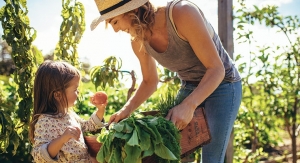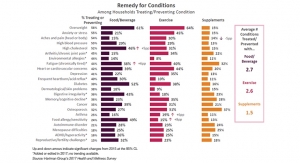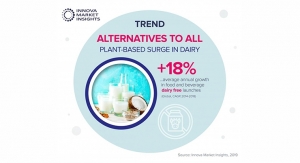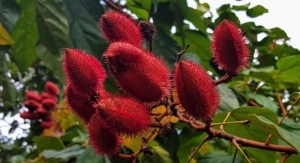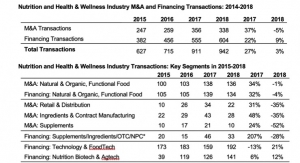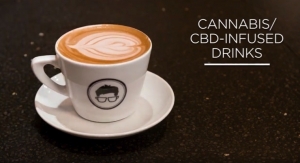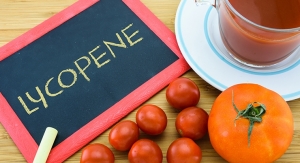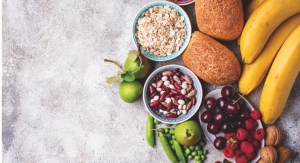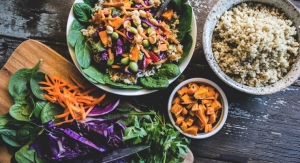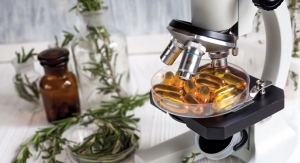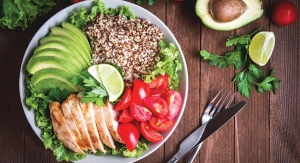02.25.19
In the new report U.S. Food Market Outlook 2019, Packaged Facts examined “disruptive innovation” across 14 essential food categories: Cereal, Chocolate Candy, Cookies, Fresh Bread, Fresh Packaged Salads, Frozen Dinners/Entrees, Frozen Pizza, Ice Cream/Frozen Novelties, Meal/Snack Bars, Meat/Poultry, Natural & Specialty Cheese, Salty Snacks, Soup, and Yogurt.
Packaged Facts identified several key disruptive trends to watch for in 2019. Four of these top trends include:
1. Local Emerges as the Next-Gen Organic
Organic products have been one of the hottest trends in the food industry, and local is the evolution of that trend, according to Packaged Facts. This is especially true when it comes to products such as fresh packaged salads. Locally grown produce and packaged salads are fresher and have a longer shelf life because they don’t have to travel far to get into stores. The vast majority of greens in the U. S. come from California and Arizona, which means much of the country gets a less fresh product. Local is also inherently safer because it is grown indoors. Typical produce grown outdoors is handled several times before it arrives in a consumer’s home. In addition to being grown indoors, local produce is being farmed hydroponically, making it more sustainable.
Several start-ups are innovating and disrupting in locally grown produce. For example, BrightFarms sells packaged lettuce and other salad greens to major grocery retailers in the U.S. The products are grown in glass-roofed, 140,000 sq. ft. hydroponic greenhouse farms in Illinois, Virginia, Pennsylvania, Ohio, and Texas. The company says its local growing method reduces freight costs and ensures year-round supply with a longer shelf life. In June 2018, BrightFarms said it raised $55 million in a new funding round to open more greenhouses. Since then, it’s been reported that BrightFarms has expanded distribution of its sustainably and hydroponically grown greens to include Dierbergs, Food Lion, Jungle Jim’s International Markets, Misfits Market, and Tops Markets.
Similarly, the company Local Roots sustainably grows its greens in what it calls “TerraFarms”, retrofitted 40-foot-long shipping containers. The company says its indoor farming method uses up to 99% less water than conventional farming, and without pesticides or herbicides. With reportedly more than 100 units across the country, Local Roots aims to deliver fresh products to local markets. Its first retail products entered Walmart stores in California last year.
2. Greater Authenticity Drives Innovation
Packaged Facts found consumers are looking for at-home food products that deliver “restaurant quality” and “chef-inspired” meals. Increasingly, millennials and other younger people want greater authenticity that comes from involvement with real chefs who seem to be cooking the meals in a kitchen, rather than in a big industrial food processing plant. Marketers of frozen dinners and entrees are among those leading the way in this trend.
For example, Grainful, part of Chobani’s Food Incubator program, makes whole grain-based frozen entrees with a blend of whole oats, quinoa and sorghum, vegetables, proteins, and sauces. Based in Ithaca, NY, it boldly states “Our frozen entrees are created in Ithaca, by a real chef in a real kitchen”. Likewise, Frontera Foods, owned by ConAgra, markets a range of frozen Mexican-inspired bowls and skillet meals created by renowned chef Rick Bayless, who specializes in Mexican cuisine. Meanwhile, Frozen Foodies brings actual restaurant meals into the home with frozen meals made in partnership with famous Chicago chefs. The dishes are developed from real menu items, cooked in a central location, and then cryogenically frozen to preserve taste and texture. Meals are created with a brand such as Food Buddha Gourmet, Pit Master Lee Ann, Tio Rico's, Firenze, Up and Eat 'em, and eatcetera. Customers can order items individually or through a subscription, and products are shipped directly to homes.
3. New Players Challenging the Old Guard, Shaking Up the Status Quo
Traditionally, major food players take the majority of the steps to innovate the industry, but in certain segments new players are the ones breaking new ground. For instance, in the ice cream segment, it took a small upstart to disrupt the category and force everybody else to play catch-up.
Better-for-you ice cream brand Halo Top launched in 2012 and exploded in popularity over the last several years, as a lot of consumers fell in love with its high protein, low-calorie, reduced sugar platform that promises the taste and feel of regular ice cream—though not everyone loves the results. Nevertheless, the brand hit the trifecta of attributes, as a growing number of consumers crave all things protein, prefer reducing calories over dieting, and think sugar is evil.
Halo Top has even taken direct aim at market leaders, posting comparisons on its website.
In response, numerous major and minor competitors have jumped on board with their own versions. Unilever began to offer this type of ice cream under its Ben & Jerry’s and Breyers brands and most recently launched a new brand, Culture Republick to differentiate in the space. Culture Republick delivers on protein, calories, and sugar with an added bonus of probiotics. Plus it supports culture (a play on probiotics) by supporting local artists, some of whom designed the product’s packaging.
Coolhaus is another upstart disrupting in different ways. The super-premium brand bills itself as “Awesome Ice Cream” known for unique, sweet/savory flavors like Balsamic Fig & Mascarpone, Milkshake & Fries, and Street Cart Churro Dough. The company started selling in a truck on the street and now distributes in 6,000+ grocery stores like Safeway, Wegmans, and Whole Foods. It still operates ice cream trucks and carts in LA, NYC, and Dallas. Coolhaus markets more than 30 SKU’s including pints, sandwiches, and bars. Not one to rest on its laurels, in Spring 2019 the company will launch a line of 13 vegan ice cream products made from peas, brown rice, and cocoa butter.
4. Culture Focused on Growing Gut Health
As consumers increasingly focus on digestive issues and increasing gut health, they have gravitated to fermented and probiotic-rich foods and beverages like yogurt, Kefir, kombucha, and kimchi. While cereal is not in this realm, cereal makers have joined some in other food categories that are incorporating probiotics and other gut-healthy ingredients into new products.
Kellogg’s recent HI! Happy Inside cereal promotes digestive wellness with prebiotics, probiotics, and fiber. The cereal contains 1 billion live probiotics from active strains, 2. 5 grams of prebiotics, and 8 to 9 grams of fiber. Available in three flavors, HI! Happy Inside cereal is a blend of fruit, yogurt pieces, and 100% whole grains. The product was developed at WK Kellogg Institute for Food & Nutrition Research. Prior to introducing HI! Happy Inside, Kellogg launched Special K Nourish cereal with probiotics. The company claimed at launch that Special K Nourish was the only cereal from a leading brand which contains live and active probiotic cultures. In addition to probiotics, the cereal contains whole grains, peach-flavored flakes, blueberries, raspberries, and yogurt pieces.
Relatedly, thinkThin’s new line of protein and probiotic hot oatmeal promotes overall wellness and digestion with 6g of fiber, 10g of protein, and 1 billion CFUs of live probiotics. The oatmeals are non-GMO, gluten-free, and have no artificial flavors or sweeteners.
Packaged Facts identified several key disruptive trends to watch for in 2019. Four of these top trends include:
1. Local Emerges as the Next-Gen Organic
Organic products have been one of the hottest trends in the food industry, and local is the evolution of that trend, according to Packaged Facts. This is especially true when it comes to products such as fresh packaged salads. Locally grown produce and packaged salads are fresher and have a longer shelf life because they don’t have to travel far to get into stores. The vast majority of greens in the U. S. come from California and Arizona, which means much of the country gets a less fresh product. Local is also inherently safer because it is grown indoors. Typical produce grown outdoors is handled several times before it arrives in a consumer’s home. In addition to being grown indoors, local produce is being farmed hydroponically, making it more sustainable.
Several start-ups are innovating and disrupting in locally grown produce. For example, BrightFarms sells packaged lettuce and other salad greens to major grocery retailers in the U.S. The products are grown in glass-roofed, 140,000 sq. ft. hydroponic greenhouse farms in Illinois, Virginia, Pennsylvania, Ohio, and Texas. The company says its local growing method reduces freight costs and ensures year-round supply with a longer shelf life. In June 2018, BrightFarms said it raised $55 million in a new funding round to open more greenhouses. Since then, it’s been reported that BrightFarms has expanded distribution of its sustainably and hydroponically grown greens to include Dierbergs, Food Lion, Jungle Jim’s International Markets, Misfits Market, and Tops Markets.
Similarly, the company Local Roots sustainably grows its greens in what it calls “TerraFarms”, retrofitted 40-foot-long shipping containers. The company says its indoor farming method uses up to 99% less water than conventional farming, and without pesticides or herbicides. With reportedly more than 100 units across the country, Local Roots aims to deliver fresh products to local markets. Its first retail products entered Walmart stores in California last year.
2. Greater Authenticity Drives Innovation
Packaged Facts found consumers are looking for at-home food products that deliver “restaurant quality” and “chef-inspired” meals. Increasingly, millennials and other younger people want greater authenticity that comes from involvement with real chefs who seem to be cooking the meals in a kitchen, rather than in a big industrial food processing plant. Marketers of frozen dinners and entrees are among those leading the way in this trend.
For example, Grainful, part of Chobani’s Food Incubator program, makes whole grain-based frozen entrees with a blend of whole oats, quinoa and sorghum, vegetables, proteins, and sauces. Based in Ithaca, NY, it boldly states “Our frozen entrees are created in Ithaca, by a real chef in a real kitchen”. Likewise, Frontera Foods, owned by ConAgra, markets a range of frozen Mexican-inspired bowls and skillet meals created by renowned chef Rick Bayless, who specializes in Mexican cuisine. Meanwhile, Frozen Foodies brings actual restaurant meals into the home with frozen meals made in partnership with famous Chicago chefs. The dishes are developed from real menu items, cooked in a central location, and then cryogenically frozen to preserve taste and texture. Meals are created with a brand such as Food Buddha Gourmet, Pit Master Lee Ann, Tio Rico's, Firenze, Up and Eat 'em, and eatcetera. Customers can order items individually or through a subscription, and products are shipped directly to homes.
3. New Players Challenging the Old Guard, Shaking Up the Status Quo
Traditionally, major food players take the majority of the steps to innovate the industry, but in certain segments new players are the ones breaking new ground. For instance, in the ice cream segment, it took a small upstart to disrupt the category and force everybody else to play catch-up.
Better-for-you ice cream brand Halo Top launched in 2012 and exploded in popularity over the last several years, as a lot of consumers fell in love with its high protein, low-calorie, reduced sugar platform that promises the taste and feel of regular ice cream—though not everyone loves the results. Nevertheless, the brand hit the trifecta of attributes, as a growing number of consumers crave all things protein, prefer reducing calories over dieting, and think sugar is evil.
Halo Top has even taken direct aim at market leaders, posting comparisons on its website.
In response, numerous major and minor competitors have jumped on board with their own versions. Unilever began to offer this type of ice cream under its Ben & Jerry’s and Breyers brands and most recently launched a new brand, Culture Republick to differentiate in the space. Culture Republick delivers on protein, calories, and sugar with an added bonus of probiotics. Plus it supports culture (a play on probiotics) by supporting local artists, some of whom designed the product’s packaging.
Coolhaus is another upstart disrupting in different ways. The super-premium brand bills itself as “Awesome Ice Cream” known for unique, sweet/savory flavors like Balsamic Fig & Mascarpone, Milkshake & Fries, and Street Cart Churro Dough. The company started selling in a truck on the street and now distributes in 6,000+ grocery stores like Safeway, Wegmans, and Whole Foods. It still operates ice cream trucks and carts in LA, NYC, and Dallas. Coolhaus markets more than 30 SKU’s including pints, sandwiches, and bars. Not one to rest on its laurels, in Spring 2019 the company will launch a line of 13 vegan ice cream products made from peas, brown rice, and cocoa butter.
4. Culture Focused on Growing Gut Health
As consumers increasingly focus on digestive issues and increasing gut health, they have gravitated to fermented and probiotic-rich foods and beverages like yogurt, Kefir, kombucha, and kimchi. While cereal is not in this realm, cereal makers have joined some in other food categories that are incorporating probiotics and other gut-healthy ingredients into new products.
Kellogg’s recent HI! Happy Inside cereal promotes digestive wellness with prebiotics, probiotics, and fiber. The cereal contains 1 billion live probiotics from active strains, 2. 5 grams of prebiotics, and 8 to 9 grams of fiber. Available in three flavors, HI! Happy Inside cereal is a blend of fruit, yogurt pieces, and 100% whole grains. The product was developed at WK Kellogg Institute for Food & Nutrition Research. Prior to introducing HI! Happy Inside, Kellogg launched Special K Nourish cereal with probiotics. The company claimed at launch that Special K Nourish was the only cereal from a leading brand which contains live and active probiotic cultures. In addition to probiotics, the cereal contains whole grains, peach-flavored flakes, blueberries, raspberries, and yogurt pieces.
Relatedly, thinkThin’s new line of protein and probiotic hot oatmeal promotes overall wellness and digestion with 6g of fiber, 10g of protein, and 1 billion CFUs of live probiotics. The oatmeals are non-GMO, gluten-free, and have no artificial flavors or sweeteners.


